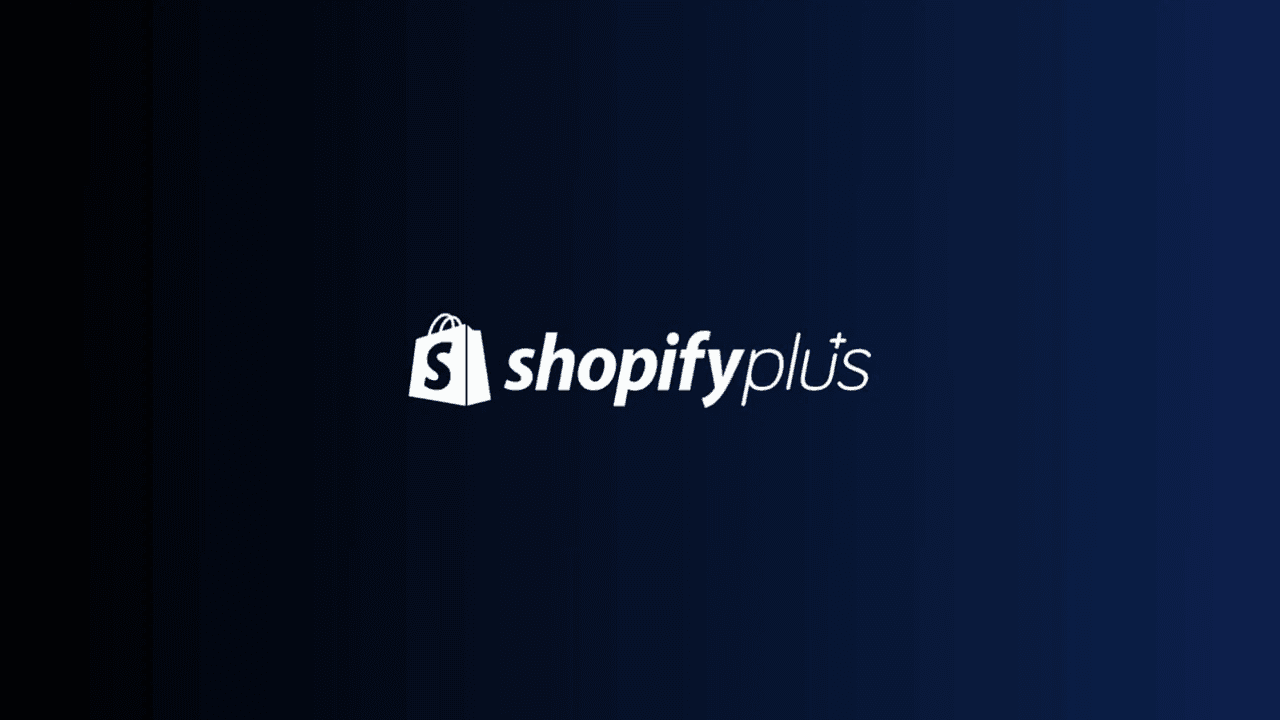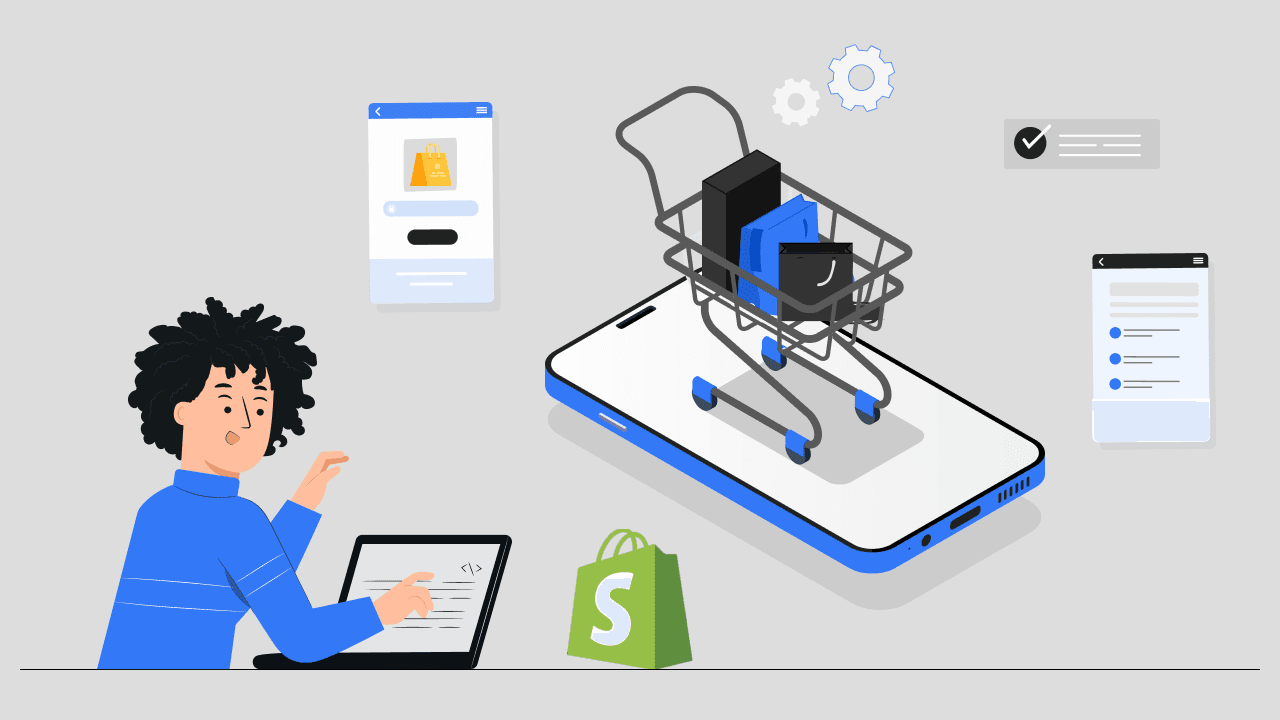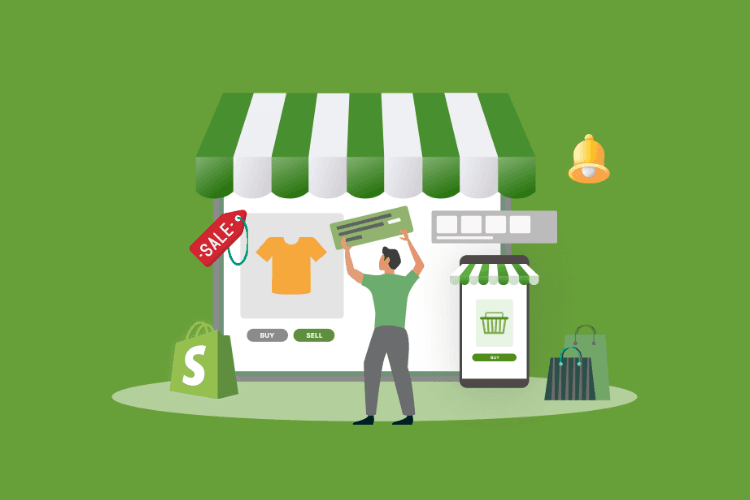For enterprise decision-makers, choosing an eCommerce platform is like selecting the foundation for a skyscraper—one thing goes wrong, and every future initiative becomes more expensive, more complex, and more constrained. Unlike SMB businesses or startups that can still pivot platforms relatively easily, enterprise platform decisions are based on 5-7 year technology trajectories that either make or break their growth strategy.
With stakes this high and dozens of "enterprise-ready" eCommerce platforms in the market, how do you cut through vendor promises to make the right choice? This comprehensive blog post examines Shopify Plus as a strategic platform option, dissecting its capabilities that solve typical enterprise eCommerce challenges, implementation strategies, and total cost implications. More importantly, it provides a multi-stage decision framework to determine whether Shopify Plus is right for your enterprise store and aligns with your organization's strategic ambitions for the next decade.
I. Enterprise-Grade Capabilities That Set Shopify Plus Apart
While basic eCommerce platforms focus on individual store management, Shopify Plus features are designed specifically for complex enterprise operations that require scalability, security, and flexibility.
1. Native Support for Multi-Entity Management
Shopify Plus natively supports multi-brand operations through a unified admin dashboard that can manage up to 10 distinct storefronts (under a single account), each with customized branding, pricing, and product catalogs. It also supports headless implementations (custom front-end components decoupled from the back-end commerce engine) and unlimited employee accounts. Each account comes with granular role-based permissions.
Additionally, Shopify Plus offers a premium feature, Markets Pro, to simplify global expansion by facilitating operations in over 150 countries. It can centralize inventory management across 200 locations and provide native multi-language support without requiring separate platform instances.
Strategic Advantage: Managing multiple brands or markets typically requires expensive custom development or reliance on various platforms. However, Shopify Plus eliminates these complexities, making it clear why many businesses choose Shopify Plus for enterprise eCommerce over other solutions.
2. Advanced Automation & Workflow Engine - Shopify Flow and Launchpad
"The first rule of any technology used in a business is that automation applied to an efficient operation will magnify the efficiency" - Bill Gates. For enterprises managing complex eCommerce operations, automation isn't just a convenience or means to enhance efficiency—it has become a competitive necessity.

Shopify Plus comes with a premium feature, Flow, which operates as a visual workflow builder that creates if-this-then-that automation rules triggered by specific business events. For example, when inventory drops below a threshold, Flow can automatically reorder stock, notify suppliers via email, and update product availability across all storefronts. This feature enables enterprises to set complex conditional logic for multiple tasks easily.
Launchpad is another Shopify feature that automates campaign scheduling. It coordinates time-sensitive activities across multiple storefronts, enabling organizations to pre-schedule product launches, price changes, and promotional campaigns to go live simultaneously across all markets. For global MNCs, Launchpad also accommodates timezone-specific automation, ensuring campaigns launch at optimal local times in each region. For flash sales, Launchpad automatically allocates inventory quotas across different storefronts and manages promotional pricing without manual intervention.
Strategic Advantage: These Shopify Plus features eliminate the need for expensive middleware solutions and reduce manual operational overhead.
3. Integration & Data Management Capabilities for Large, Interconnected Ecosystems
Shopify Plus offers a native GraphQL Admin API for seamless data fetching, even in bulk. This API connects your store with systems like SAP, Oracle NetSuite, and Microsoft Dynamics, among others, to handle large-scale product data updates as well as customer data imports in a single operation. This bidirectional data synchronization ensures inventory, pricing, and customer information remain consistent across all business systems.
With this API, enterprises can also unify data across B2B and D2C channels. This means that when a customer shops personally and also makes purchases through their company's B2B account, both transaction histories are linked.
Strategic Advantage: Eliminates the middleware costs and complexity that plague enterprise implementations on other platforms.
4. Analytics & Business Intelligence Integration with ShopifyQL Notebooks
Another Shopify Plus benefit that is particularly beneficial for enterprise eCommerce operations is its SQL-like querying capabilities, utilized through ShopifyQL Notebooks. It works like Excel for eCommerce data, but much more powerful. Instead of downloading CSV files and creating manual reports, executives can write simple SQL queries to retrieve real-time data from all Shopify Plus stores simultaneously.
Enterprises can see which customers return monthly, which products drive repeat purchases, and how different marketing campaigns perform across regions. These insights can be integrated directly with business intelligence tools, such as Tableau, Power BI, and Looker, which many enterprises already use.
Strategic Advantage: This Shopify Plus feature enables data-driven decision-making at scale, providing business intelligence capabilities that justify an enterprise-level investment.
5. Robust Compliance & Security Infrastructure
Shopify Plus includes SOC 2 Type II compliance for data security audits and operational controls. PCI-DSS Level 1 compliance for automatic handling of credit card processing and payment data protection. The platform also addresses international data privacy requirements through built-in tools that comply with GDPR for European customers, CCPA for US-based residents, and PIPEDA for Canadian data protection.
Business Impact: Reduces compliance overhead and regulatory risk that can cost enterprises millions in fines and remediation.
II.Investment Analysis: When and Why Shopify Plus Makes Financial Sense for Enterprises
Understanding whether Shopify Plus is right for your enterprise store requires looking beyond monthly platform fees to examine the complete cost structure, including hidden savings and the strategic value that enterprise-grade capabilities deliver.
For enterprise decision-makers evaluating platform investments, the question doesn’t simply restrict to "How much does Shopify Plus cost?" It is instead about the total financial impact, or total cost of ownership (TCO), on the business.
1. The Total Cost of Ownership (TCO) Reality
Shopify Plus presents a fundamentally different cost model compared to traditional enterprise platforms. In fact, Shopify Plus’s TCO is 36% lower than competitors on average, but the real value lies in understanding what's included versus what enterprises typically pay separately.
Shopify Plus pricing is transparent. It goes as follows:
These monthly fees include hosting fees, maintenance costs, version upgrades, up to 10 storefronts, unlimited employee accounts, priority support, and enterprise security features. Besides these fixed charges, Shopify Plus has a "Variable Platform Fee" that is "Calculated as a percentage of your sales revenue or a minimum fee of $2,500 per month (whichever is higher).
If you opt for other eCommerce platforms individually, these costs can easily amount to $50,000-$150,000 annually when purchased separately from traditional providers.
2. Investment Thresholds & Decision Criteria
While Shopify Plus is a wise long-term investment in eCommerce, you must assess clear revenue and operational indicators to gauge your financial readiness for its implementation. For most businesses, Shopify Plus becomes financially viable when annual revenue exceeds $1 million, with optimal value achieved at $ 5 million or more. In other words, the platform becomes cost-effective when the monthly transaction fees exceed the platform fee, which starts at $2,300 per month.

However, enterprise-specific justification factors extend beyond pure revenue metrics. If you manage multiple brands, require B2B capabilities alongside D2C operations, or are expanding internationally, you will find immediate value in Shopify Plus, even with lower transactional volume or an annual revenue investment below $1 million.
This is why the break-even analysis becomes compelling when comparing total operational costs and long-term Shopify Plus benefits.
III. Enterprise Decision Playbook: The 3-Phase Assessment Before Leveraging Shopify Plus for eCommerce Development
Here is a three-phase assessment framework to help you determine how to build enterprise eCommerce on Shopify Plus.
# Phase 1: Business Case Validation
1. Assess Existing eCommerce Investment and Solution: For enterprises migrating from other platforms, calculate TCO, including licensing, hosting, development, and maintenance expenses. On the other hand, for those building their first dedicated eCommerce platform, assess your current online sales infrastructure costs, including marketplace fees, basic website hosting, third-party tools, and manual process overhead.
2. Document Current Operational Constraints: Identify revenue limitations, checkout abandonment, or inability to expand into new markets. It would also help if you’re able to evaluate constraints from fragmented systems, such as multiple marketplaces, manual inventory updates, disconnected customer data, or limited payment processing options.
3. Establish ROI Baseline: Create financial projections based on Shopify Plus pricing and other implementation (or migration) expenses.
a. For migrations, you can factor in:
- Expected efficiency gains from Shopify Flow automation.
- Reduced TCO.
- Reduced development needs.
- Eliminated infrastructure management costs.
b. For new implementations, calculate:
- Potential revenue gains from unified operations.
- Eliminated marketplace commission fees.
- Reduced fulfillment costs.
- Time savings from automated processes.

# Phase 2: Implementation Feasibility Assessment
1. Technical Readiness Evaluation: Assess your current system complexity and integration requirements with existing enterprise systems (ERP, CRM, PIM, WMS). Evaluate their API compatibility.
2. Organizational Change Capacity: Assess your team's ability to manage a 3-to 6-month implementation timeline. Consider whether you need to hire dedicated Shopify Plus developers internally or outsource Shopify Plus eCommerce development services for specialized expertise.
3. Risk Mitigation Planning: Identify potential enterprise eCommerce challenges, such as data migration complexity, user training, and business continuity issues that may arise during the transition. Plan phased rollout strategies and consider pilot programs to minimize operational disruption.
# Phase 3: Strategic Fit Analysis
1. Futuristic Business Alignment: Evaluate whether Shopify Plus features can facilitate your 3-5 year strategic objectives, including global expansion, B2B growth, or omnichannel operations. This includes assessing the platform's ability to scale with projected transaction volumes and business complexity.
2. Competitive Edge Assessment: Analyze how Shopify Plus benefits translate into market advantages, in terms of go-live timeline, time-to-market for new products, customer satisfaction scores, etc.
3. Total Strategic Value Calculation: Beyond cost savings, quantify strategic Shopify Plus benefits like faster global expansion, enhanced customer experiences, and operational agility.
This systematic, three-step assessment will make sure that your enterprise eCommerce decisions are based on comprehensive analysis rather than surface-level feature comparisons. If you find it overwhelming or lack the expertise or bandwidth to make this assessment, you can always count on a professional Shopify Plus development service partner. Their eCommerce consultants can examine your requirements and help determine whether Shopify Plus is the right choice for your enterprise.
IV. The Enterprise Platform Choice: Make it Count
The platform you choose today will either accelerate or constrain your enterprise's next chapter. While others continue to debate features and pricing, market leaders understand that all enterprise eCommerce solutions come with a reasonable price tag. However, this should also come with long-term stability, robust security, and easy expansion. And Shopify Plus offers it all. So the question isn't whether you can afford to invest in Shopify’s enterprise-grade eCommerce platform—it's whether you can afford not to in today’s rapidly evolving digital commerce space.vestment Thresholds & Decision Criteria Enterprise Decision Playbook: The 3-Phase Assessment Before Leveraging Shopify Plus for eCommerce Development Phase 1: Business Case Validation Phase 2: Implementation Feasibility Assessment Phase 3: Strategic Fit Analysis The Enterprise Platform Choice: Make it Count
Read more:
